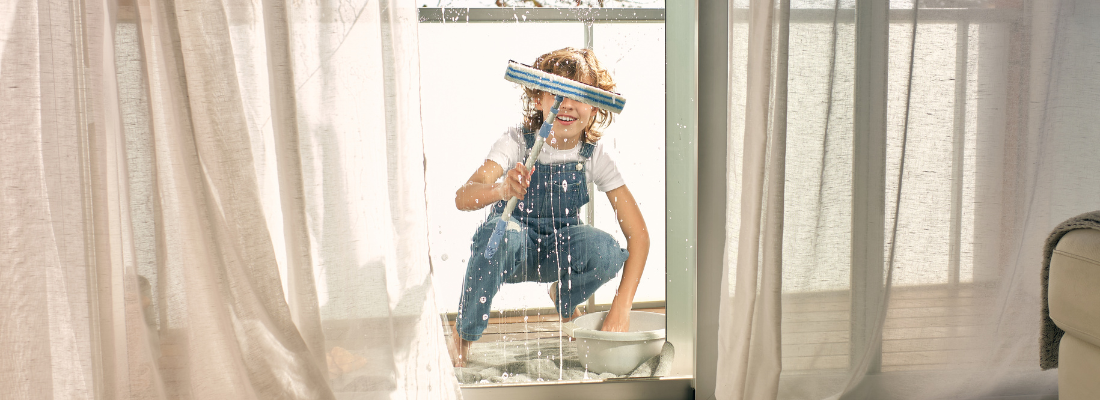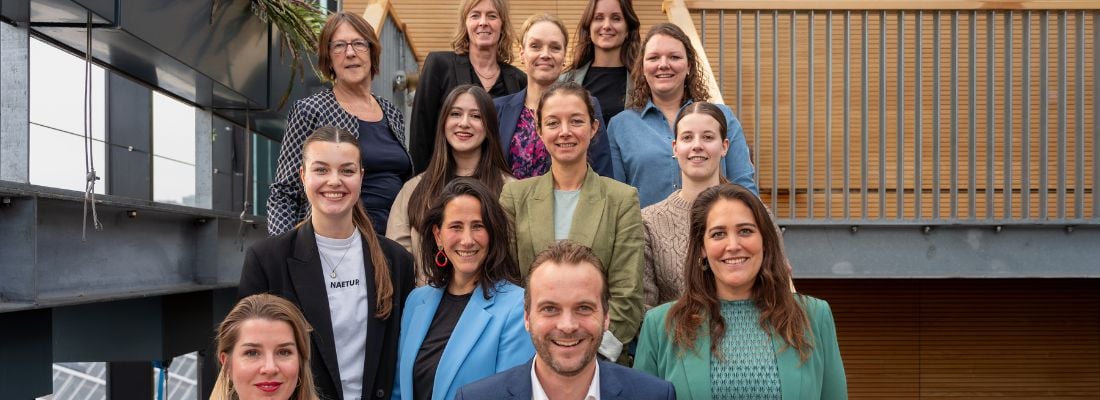The power of digital tech in healthcare cleaning
For decades, the fight against hospital-acquired infections (HAIs) has relied heavily on human vigilance and established cleaning protocols. While these remain fundamental, traditional cleaning methods often fall short, leaving room for harmful antimicrobial-resistant pathogens to spread. [1]
Fortunately, the healthcare cleaning sector is experiencing a dynamic shift, embracing technology as a powerful ally in safeguarding patient well-being. Digital technologies are reshaping the healthcare cleaning sector and unlocking new possibilities for efficiency, effectiveness, and innovation.
However, for this transformation to be successful it requires a collaborative approach to achieve more stringent hygiene standards [2]. Exciting opportunities such as the upcoming Healthcare Cleaning Forum (HCF) offer a unique platform to address the complex challenges posed by healthcare-associated infections, as well as showcase the latest research and pioneering solutions.
Did you know that The HCF takes place on 16 May 2024 alongside this year’s Interclean Amsterdam show?
FIND OUT MORE ABOUT THE HCF
In the run up to this not to be missed event we caught up with Kelsey Hargreaves from BICSc (The British Institute of Cleaning Science) to explore the transformative potential of technology.
The importance of training healthcare cleaning staff to use the new technology and innovations
According to Kelsey, “The cleaning industry is evolving at a rapid rate. New technology and innovations are introduced to each sector within the industry every day. As we begin to ask questions on the reliability and utility of these technologies, there is one key tenet of innovation that many forget – training the experts we have! As with any equipment that we use in cleaning, we need to ensure our teams are kept safe and trained to complete their tasks to the best of their ability.
One of the key tenets of the BICSc mission is protecting the operative. With more technology comes more understanding. Where developments are being made to aid the cleaning services teams in productivity and ensure safety for stakeholders within healthcare settings, we are excited to see how the industry can change to become innovative, safer and adapt to an ever-evolving world of technology.”
Top tips
According to Kelsey:
“Do not assume that technology is accessible and easy to use for all, every learner is different. You may need to train more than the operational cleaning staff to use this equipment! There is a lot of compliance related to technology and healthcare policy, think about all the stakeholders that may be impacted! Technology and equipment of any kind are moments that involve investment, what’s the point in investing money if no one can use it?”
Let’s discover the latest tech:
Automated Room Disinfection:
At specific wavelengths UVC light disrupts the DNA of microorganisms, effectively killing bacteria, viruses, and fungi. [3]
Robots equipped with UVC emitters can autonomously navigate rooms, delivering targeted disinfection after patient discharge or in response to outbreaks. Studies have shown UVC robots to be effective in reducing HAI rates by up to 70%, significantly improving patient safety. Research published in the Journal of Hospital Medicine showed that robotic ultraviolet (UV) disinfection significantly reduced Clostridium difficile (C. diff) spores in patient rooms [4]
Hydrogen peroxide vapour, pulsed xenon UV light, and even plasma technology are also being explored. Regardless of the method, automated room disinfection offers several advantages:
- Increased speed and efficiency
- Improved safety
- Reduced human error
Ultraviolet (UV) Disinfection Robots:
These robots offer a non-touch technology, meaning they don’t physically remove dirt but effectively disinfect surfaces. However, they do not replace routine manual cleaning; instead, they complement it. [5]
Aerosol and Vaporised Hydrogen Peroxide:
Vaporised hydrogen peroxide and aerosol treatments can reach areas that manual cleaning might miss. A study published in the American Journal of Infection Control demonstrated that using hydrogen peroxide vapor technology decreased HAI rates by 37% in operating rooms.
Pulsed-Xenon UV Light System:
This system emits intense UV light pulses to disinfect surfaces. It is particularly useful for large spaces and high-traffic areas.
High-Intensity Narrow-Spectrum (405 nm) Light:
This narrow-spectrum light targets specific pathogens and can be used for continuous disinfection.
UV-C Radiation:
UV-C radiation breaks down bacterial DNA, preventing reproduction and eradicating bacteria. While it cannot replace manual cleaning, it is effective for room disinfection.
Cleaning Robots and Autonomous Vehicles
Autonomous robotic cleaners equipped with UV-C disinfection technology are leading the charge in this digital revolution [6]. These autonomous robots are capable of navigating healthcare environments, identifying high-touch surfaces, and delivering targeted disinfection using ultraviolet light.
By harnessing the power of automation and artificial intelligence, these robots can supplement traditional cleaning practices, reduce human error, and ensure thorough disinfection of critical areas. A study in PLOS One found that AI-powered cleaning robots combined with human oversight led to a 99.9% reduction in bacterial load on high-touch surfaces. [7]
Autonomous floor scrubbers, vacuum cleaners and sanitising robots can take on repetitive tasks like cleaning floors and disinfecting high-touch surfaces. This frees up valuable time for human staff to focus on more complex cleaning tasks, like disinfecting medical equipment or patient care areas. Additionally, robots can be programmed to operate at night or during off-peak hours, minimising disruption to hospital operations.
AI: The Smart Cleaning Solution
AI-powered cleaning protocols are revolutionising the cleaning industry by leveraging artificial intelligence to enhance efficiency, safety, and effectiveness. AI algorithms are finding their way into cleaning protocols, analysing data from sensors, wearables, and cleaning robots to optimise cleaning schedules, resource allocation, and even personalise cleaning protocols based on specific patient needs.
Let’s delve into the benefits of integrating AI into cleaning services:
1. Data collection and analysis:
- Accurate data collection and analysis can optimise cleaning processes. For instance, identifying frequently dirtier areas allows for adjustments to cleaning schedules and predictive maintenance.
2. Optimised resource allocation:
- AI systems can optimise resource allocation by suggesting the most effective cleaning methods and schedules based on real-time data. For instance, they can determine when specific areas need cleaning, prioritise high-risk zones, and allocate staff efficiently. [8]
3. Personalised cleaning protocols:
- AI can personalise cleaning protocols based on specific patient needs. For example:
- Isolation Rooms: AI can identify patients with contagious diseases and tailor cleaning procedures accordingly.
- High-Risk Patients: For immunocompromised patients, AI can recommend stricter cleaning protocols.
- Surgical Areas: AI can ensure thorough cleaning before and after surgeries.
- Patient Rooms: Based on patient conditions, AI can adjust cleaning products and procedures.
4. Cost:
- Despite the initial investment, AI-powered solutions can reduce long-term costs by improving efficiency, resource allocation, and maintenance.
Wearabletech: empowering staff for better hygiene
Imagine healthcare cleaning staff equipped with smartwatches that track their movements, monitor their adherence to cleaning protocols, and provide real-time feedback. This isn't a futuristic vision – it’s wearable technology in action! These devices can be invaluable tools for improving cleaning efficiency and quality control.
For example, wearables can track hand hygiene compliance, ensuring that staff wash their hands frequently and properly. Additionally, they can provide real-time alerts if cleaning protocols are not being followed, allowing for immediate corrective action. Wearables can also collect data on environmental factors like temperature and humidity, which can be used to optimise cleaning strategies and prevent the spread of certain pathogens.
Here are some ways wearable tech can benefit healthcare cleaning staff:
1. Staff movement tracking:
- Wearable devices can monitor the real-time movements of cleaning staff within healthcare facilities. By tracking their location and activity, supervisors can ensure that cleaning protocols are followed consistently.
2. Adherence to cleaning protocols:
- Wearables can provide reminders and alerts to cleaning staff about specific tasks or protocols. For example, they can remind staff to sanitise their hands and follow proper disinfection procedures.
3. Quality control and efficiency:
- Wearable devices can collect data on cleaning activities, such as the time spent in each area, the frequency of cleaning, and the thoroughness of disinfection.
4. Monitoring PPE Usage:
- Wearables can track the usage of PPE such as masks, gloves, and gowns. They help ensure that healthcare professionals adhere to PPE guidelines consistently, reducing the risk of cross-contamination and protect both patients and staff.
Challenges and ethical considerations: navigating the new frontier
While these technologies offer exciting possibilities, there are challenges to consider. Job displacement due to automation, data privacy concerns surrounding wearable devices, and the transparency and potential bias of AI systems are all valid concerns. [9]
Investing in employee training and reskilling programs can help ease the transition to automation. Robust data privacy protocols and clear communication are essential for building trust with staff and patients. [10]
Healthcare cleaning gets a helping hand with the Healthcare Cleaning Forum
Successful implementation of these technologies requires teamwork and collaboration across all levels:
The Healthcare Cleaning Forum brings all these parties together and serves as a platform where all stakeholders can:
Join us on 16 May 2024 at the Healthcare Cleaning Forum (HCF): a unique 1-day conference dedicated to advancing the crucial field of healthcare environmental hygiene. This specialised event focuses on environmental cleaning, disinfection, patient safety, and infection prevention and control.
Looking forward to seeing you at INTERCLEAN AMSTERDAM 2024!
REGISTER FOR THE HCF SEE THE INFOGRAPHIC
View the HCF PROGRAMME and SPEAKERS
Conclusion: embracing the (technological) future of clean
The digital revolution is transforming healthcare cleaning, offering exciting tools to combat HAIs and ensure patient safety. By embracing these technologies responsibly and addressing potential challenges, we can shine a light on a future where healthcare hygiene is not just a dream, but a reality.
[1] The burden of health care-associated infection worldwide (who.int)
[4] UVC-PURGE: A Novel Cost-Effective Disinfection Robot for Combating COVID-19 Pandemic - PMC (nih.gov)
[5] UV Disinfection Robots: A Review - PMC (nih.gov)
[8] 8 cleaning innovations in healthcare technology | Interclean (intercleanshow.com)
[10] Ethical Concerns Grow as AI Takes on Greater Decision-Making Role | ACS (facs.org)
Share your stories with us!
Do you have an innovation or interesting news you would like to share with the professional cleaning and hygiene industry? The Interclean website and social media channels are a great platform to showcase your stories!
Please contact our press department interclean@rai.nl.
Are you an Interclean exhibitor?
Make sure you add your latest press releases to your Company Profile in the Exhibitor Portal for free exposure.
Receive the best newsletter on cleaning & hygiene - straight to your inbox!
We promise never to send you spam and you can unsubscribe at any time!





